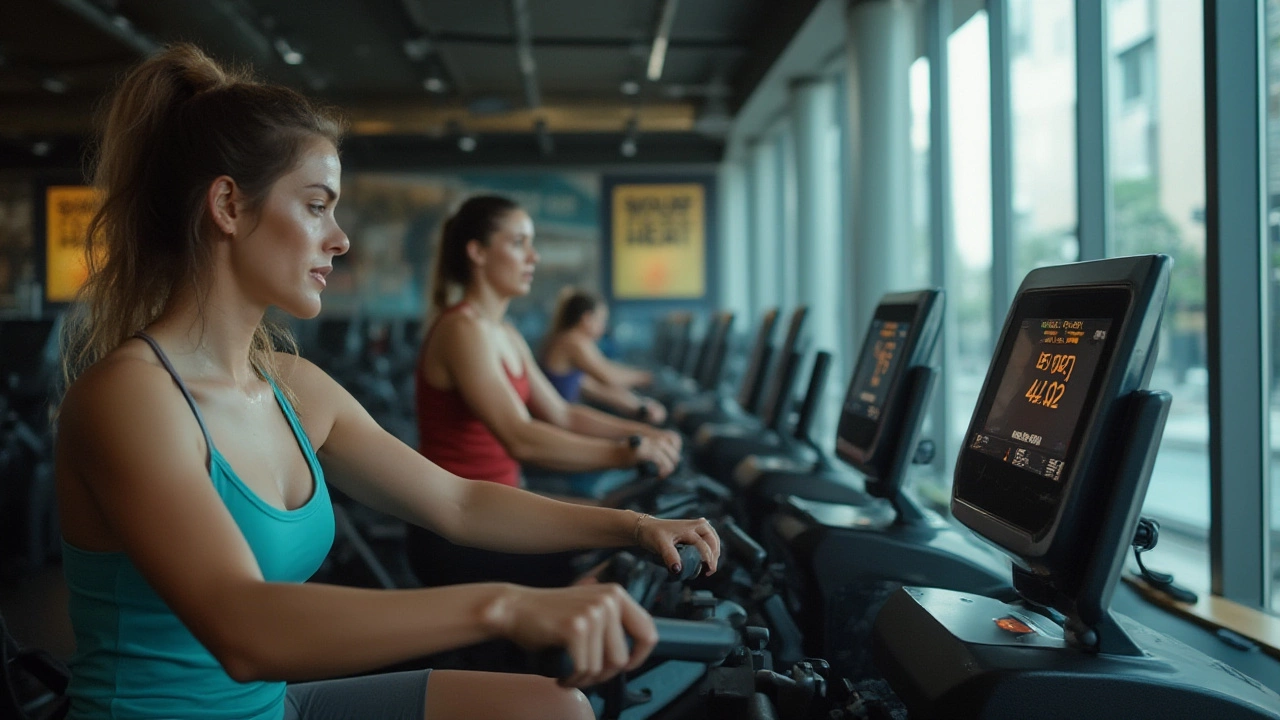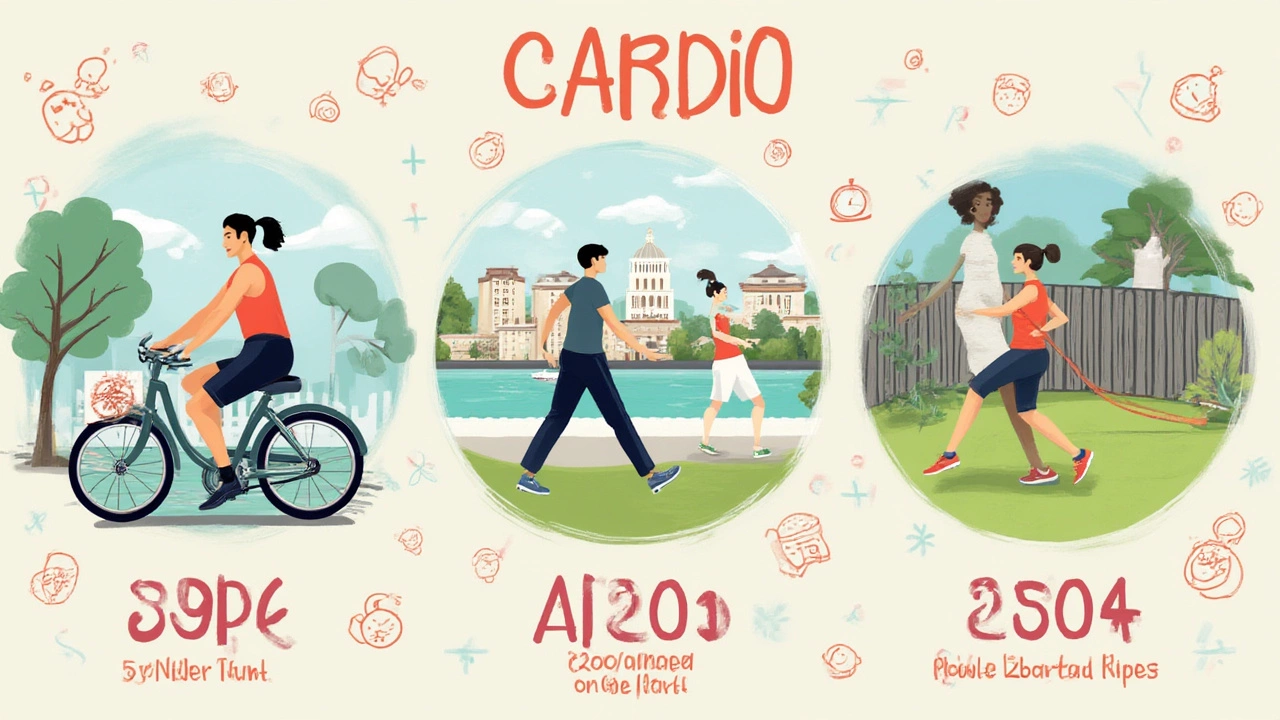Cardio Workouts That Burn the Most Fat: Your Complete Guide

You see a friend drop two dress sizes in months—then you slog away for weeks and barely notice a change. Frustrating, right? The buzz around fat-burning cardio makes it sound so simple: hop on a treadmill, sweat a bit, and watch the pounds melt away. But anyone who’s swapped stories in a gym changing room knows it isn’t that easy. Fat loss has layers—just like the old jacket I used to zip myself into when my daughter Sorrel was a baby, back before I even knew what HIIT meant. So, what’s the best cardio for burning fat? You’ll find myths, wild fitness fads, and actual science mixed up online, but let’s cut through all that noise.
How Cardio Burns Fat: What Is Really Going On?
Cardio isn’t “magic.” At its core, what burns fat is a simple equation: you burn more energy than you take in, your body taps into fat stores to make up the difference. But that’s just scratching the surface. There’s the question of WHERE your body pulls this energy from—and that answer changes depending not just on your workout, but your background, your diet, your sleep, even your stress level when your alarm clock goes off.
Your body doesn’t start burning fat the instant you lace up your trainers. First, it’ll grab easy-to-access energy: the sugar (glycogen) in your muscles. Once that’s dipped, it starts breaking apart stored triglycerides—fat—for fuel. The longer and more intense your cardio, the more likely your body is burning fat rather than carbs. But—and here’s where it gets interesting—if you run yourself into the ground or don’t eat enough, your body may fight back by holding onto fat instead. Chronic stress can even mess with hormones like cortisol, nudging your metabolism in the wrong direction.
Different cardio styles engage different energy systems. Light jogging or walking taps more fat per calorie, but because you burn fewer total calories, it’s not always the fastest way to get results. High-intensity stuff—think sprints, spin classes, or anything that leaves you breathless—uses more sugar up front but revs your metabolism for hours afterward. I learned this the sweaty way after a neighbor convinced me to try her HIIT bootcamp: after 20 minutes, I’d burned as much as during a whole hour of gentle running, and was still feeling the after-burn hours later as I tried to get Sorrel to brush her teeth.
Age and sex matter, too. As we get older, our bodies get stingier about giving up fat. Women’s bodies, especially, cling to fat for hormonal reasons (thanks, nature!), making it a longer road for me than for my husband Matthew, who shed his post-Christmas belly just by adding hill sprints to his Sunday runs. Certain medications, thyroid troubles, and sleep debt can also trip you up—so cardio isn’t a one-size-fits-all solution.
Here’s a quick look at how various types currently stack up, according to leading studies:
| Cardio Type | Fat Use per 30 min | Total Cal Burn (Average) |
|---|---|---|
| Brisk Walking | Moderate | 120-150 kcal |
| Steady-State Running | Moderate-High | 250-350 kcal |
| Cycling (Moderate) | Low-Moderate | 180-300 kcal |
| HIIT (20-min, intervals) | High | 200-300 kcal |
| Swimming (Steady) | Moderate | 220-330 kcal |
Notice how HIIT offers a higher fat usage in a shorter time. But if you dislike that style, sticking with the treadmill or swimming still burns fat, just maybe not quite as rapidly.

Cardio Workouts That Torch the Most Fat
Let’s talk about specifics for once! The question I get in every schoolyard chat isn’t “should I do cardio,” but “what’s best for actual fat loss?” Here’s the breakdown of the most popular—and some underrated—cardio choices, each with a practical spin.
- HIIT (High-Intensity Interval Training): This is the king of time-saving fat burn. You smash short bursts of high effort (say, sprinting for 30 seconds) with recovery pauses (walking for 60 seconds), repeat, and you’re done in 20–30 minutes. Studies from the British Journal of Sports Medicine show HIIT burns 25–30% more calories in less time than steady-state exercise. Even better: it boosts your metabolism for hours, so you keep burning fat after you leave the gym (or, in my case, head home to wrangle Sorrel into her uniform). The downside? It’s brutal at first—but your fitness ramps up fast.
- Steady-State Cardio (Running/Jogging): Classic and still effective for fat burning, especially when you mix up intensity and terrain. A long, consistent run burns plenty, especially as your pace creeps into the “can’t-hold-a-conversation” zone. If you’re new, intervals of walking and running can ease you in and still give fat-loss results.
- Cycling: Whether it’s outdoor hills or a gym bike, cycling can be gentle on joints but fierce on fat. Push hard in short bursts, and you’ll activate the same post-exercise burn as running. Plus, it’s less likely to lead to injury if you’re carrying extra pounds or have dodgy knees (like me after years of dance classes gone wrong).
- Rowing: Rowing gets almost every muscle involved—legs, core, arms—which means you’re using more energy (read: burning more). It’s another low-impact but high-result option, and a great alternative if running isn’t your thing.
- Swimming: Surprisingly effective, especially since cold water makes your body work harder to stay warm. Even slow laps, if you keep moving, burn loads of calories and fat.
One genius tip I picked up: swap between two or three types per week to avoid plateaus. Variety boosts results and keeps things interesting. Boredom is the enemy of consistency!
And here’s an underrated fat-burning move: power walking uphill. Hills force your legs, glutes, and core to work harder without bashing your joints. My favorite weekday habit: dropping Sorrel at school and hoofing it up Bristol’s steepest streets with a podcast. It doesn’t feel “hard-core,” but my thighs notice the difference.
Fat-burn zones on cardio machines? They’re not what most people think. Yes, exercising at 60–70% of maximum heart rate taps a higher ratio of fat—but the faster pace of HIIT or running burns far more calories, slicing through more total fat. Don’t get bogged down with those little machine readouts; it’s the big picture that matters.
Intensity—and consistency—wins. Schedule 3–5 sessions each week, mix in higher and lower effort days, and you’ll see changes (especially if you aren’t sneaking half a packet of biscuits afterward—been there, too). Staying hydrated and fueling up with protein-rich snacks afterward, like yogurt or eggs, keeps the fat-burning fires going.

Maximizing Results: Cardio, Fat Loss, and Real Life
So you’ve picked your cardio. But is there any trick to making it work harder for you—apart from sweating more and hoping for the best? Here’s what actually helps shift fat for good:
- Consistency is queen. Three random workouts won’t do much. The people who really see results pick a schedule they can stick to (even if it means shorter sessions). I block out time for myself—usually after Matthew gets home—which means I’m not cramming in a run at midnight.
- Combine with strength training. Cardio alone burns fat, but building muscle ramps up your resting metabolism. The higher your muscle mass, the more energy you burn—even watching TV with a cuppa. Pair HIIT or running with bodyweight squats or simple weights for max results.
- Prioritize sleep and manage stress. Skimp on sleep or stay stressed, and your body hoards fat (silly, but true). Aim for 7–8 hours and try some form of relaxation: a walk in the park, stretching, even a funny TV show counts. This was a gamechanger for me last winter when stress eating was sneaking up daily.
- Refeed smartly. After tough cardio sessions, refuel with protein and some carbs to help muscles recover and avoid wild cravings—all too easy to binge on pastries if you’re running on empty.
- Track progress, not just weight. Fat loss isn’t linear. Some weeks, your measurements change but weight barely moves. Take notes, photos, or use your clothes as a guide. I kept a “zip test” with my old work trousers, watching them slide up more easily as months passed.
Cardio machines and fitness gadgets are everywhere, but you don’t need fancy tech to see fat go. What matters most is regular effort and that you don’t hate every second. If dance classes or martial arts suit you better than a treadmill, guess what? You’re still torching calories.
Here’s a mind-boggler: A University of Bath study found people respond wildly differently to the same cardio routine—some lucky folks drop double the body fat, some almost none. Genes, hormones, history, and even gut bacteria play a part. That’s why your journey won’t be a perfect copy of anyone else’s. But don’t write off results because you aren’t shrinking overnight—this is a long game, with ups and downs, and plenty of surprises.
And if you ever feel stuck, switch up intensity, change location, throw in new music or podcasts. Boredom is the quickest way to bail. Let yourself enjoy the time—it makes all the difference. Matthew switched from half-marathons to rowing because he could watch silly comedies while sweating, and shockingly, now actually enjoys cardio days.
If you take away just one thing, let it be this: The best cardio to burn fat is the one you’ll stick with and enjoy enough to keep going. Whether it’s a wild HIIT class that leaves you shaking, or gentle laps in the pool before breakfast, every bit counts. Don’t sweat the trends or compare, just pick something, get moving, and see how your body adapts.
And if you spot a Bristol mum in bright trainers puffing up Park Street—wave hello! Chances are, she’s busy burning off last week’s birthday cake. Or just maybe, she’s chasing something way more satisfying than a number on a scale.